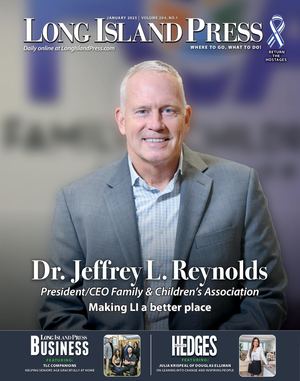What this new tool means for hospitals and COVID-19 patients

(Photo courtesy of Northwell Health)
Northwell Health has created the first-of-its-kind COVID-19 predictive tool. The head of the team who created this new endeavor is Paul Lambson, corporate director of consumer insights and analytics at Northwell Health. The thought of creating a resource to help combat COVID-19 was brought to Lambson’s attention in the earlier months of the pandemic by a Northwell physician.
“I was approached by one of the doctors in Northwell, who in normal times was actually not a practicing doctor, but an administrator,” Lambson explained. “During COVID-19, he got called back during the first wave—March, April, May time. He got called back in the front line and was working in the pediatric ICU. When things calmed down in June, he came to me and we worked on a couple of things. He explained to me how desperate it was for him to be on the front lines, how the suffering [is unlike anything he’s ever] seen and working with pregnant mothers who had COVID-19 and working through their delivery.”

(Photo courtesy of Northwell Health)
Lambson said the basis of this project is centered around Northwell Health’s website traffic—specifically where patients were clicking in regard to their searches.
“We talked about search trends,” he said. “Google had a flu predictor based on what people’s search terms were. Me and my team took that back. Our imperative was, we need to use whatever data that we have to try to find some way to help the health system prepare for a spike.”
Lambson adds that there was not much clinical data—measurements and determinants of health—to work with, so the team had to come up with new methods to find a pattern that worked as a form of prediction.
“We categorized the website into a bunch of different ways that someone would interact with our system,” he said. “So, people request appointments, they looked at doctor’s profiles. They will find a number to call. We look at it as, what actions did they take or what kind of ways they’re using the website. So, we categorize the website into these—we eventually used 15 of them—distinct categories. Then, we use machine learning algorithms to test it against whether it could predict COVID-19 diagnoses in our system. Then once we knew the ones we liked we immediately had to test—how far in advance should we be on the testing? Two weeks seemed to have the best relationship. COVID-19 diagnoses have a very day of week dependent nature. Then we refined the model and ran it through a couple different types of machine learning algorithms.”
Lambson said the predictions are made through the use of monitoring Northwell Health’s website.
“At the end of the day, we get a tally of how many people look for doctors, how many people look for wait times, how many people requested an appointment and all kinds of things,” he said. “We saw that more people than usual decided to request an appointment, less people than usual decided to look at wait times, for example. There’s 15 categories to an equation or an algorithm that we have trained and built with previous data and that will tell us this—that two weeks from today, we expect the COVID-19 cases in our hospitals to be at this level.”
In addition to the website traffic, there is clinical information that is used, in addition, as a way to monitor the COVID-19 trends.
“The hospital has a suite of tools,” Lambson said. “The departments that are not mine are monitoring a lot of vital signs and oxygen saturation levels—and a lot of things that come from hospital settings—those go into the monitoring suite that the system uses. This algorithm goes into a dashboard that is basically a line chart that shows the trend we’ve been seeing in COVID-19 cases per day. Then it shows a forecast of what the next two weeks look like.”
According to Lambson, the dashboard does not predict the number of people who are hospitalized, but rather the number of people who test positive for COVID-19 whether they are in an in-patient or out-patient setting. Lambson and the Northwell Health team are grateful to be able to share this new tool with other hospitals across the country.
“It was so important for us—for me, personally— to share this code as wide as we can,” he explained. “We felt it was important to share our knowledge with the global domain of knowledge to hopefully fast track and advance. We did this, which might mean some researcher at Johns Hopkins or Children’s National will come up with some other relationship there—that we hadn’t thought of—that would forward us. That would advance us even more.”
Visit www.github.com/northwell-health/covid-web-data-predictor for health systems interested in learning more about Northwell’s COVID-19 predictive dashboard.


























